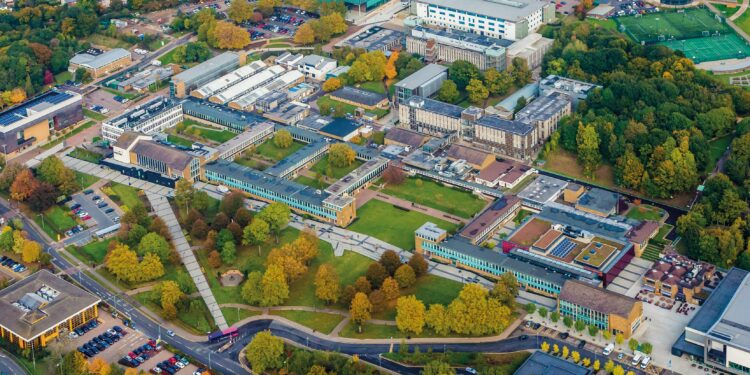Understanding Luton’s Postal Districts (LU1–LU6)
Luton is a vibrant, diverse town in Bedfordshire, often described as a London suburb due to its proximity to the capital. For newcomers—especially students at the University of Bedfordshire, University of Hertfordshire or new residents—understanding Luton’s postal districts can help navigate neighborhoods, find local amenities, and get a sense of where to live or visit. There is a thriving Nigerian community of close to 1500 members. You may join the community’s broadcast list here nigeriansinluton.com. Luton is also home to many British of Asian descent. Luton is divided into six main postcode districts, LU1 through LU6. For new students, you will hear statements like, “I live in LU1, LU2, LU3”, each covering specific areas of the town. Some neighborhoods overlap across postcode boundaries, so knowing the general breakdown is useful.
Luton Postcode Breakdown:
- LU1: Town centre, Luton Mall, train station (get direct train to London and other UK cities) Biscot, Lewsey, Marsh Farm. This is the core commercial and administrative hub, with shops, services, and civic buildings.
- LU2: Sundon Park, Stopsley, and parts of High Town. Mainly residential, northern areas with schools and local amenities.
- LU3: Marsh Farm,Farley Hill, Stopsley, parts of Limbury, and some areas close to the town centre. Covers southern and south-western residential zones.
- LU4: High Town, Leagrave, Crawley Green, and parts of Limbury. Eastern residential and commercial mix, with shops and community facilities.
- LU5: Northern outskirts beyond main Luton, including Harpenden and surrounding villages. Semi-rural and suburban areas.
- LU6: Western outskirts, including Leagrave, Dallow, and parts of Houghton Regis. Mostly residential with local parks and schools.
Over the next few minutes, we’ll explore life in Luton such as living and transport to culture, nightlife and student life—so you’re well-prepared when you arrive.
 Location & Connectivity
Location & Connectivity
Luton sits in Bedfordshire, about 30–35 miles north of central London. It’s often referred to as a London suburb—but what makes it especially convenient is that it has its very own international airport. London Luton Airport (LLA) is one of few UK towns with an airport right on its doorstep. That means easy low-cost access for you and your visiting family—no need to go into central London first.
Plus, Luton is well-connected by rail and road: trains to central London take about 25–35 minutes, and buses or car routes to the University of Hertfordshire campus in Hatfield are straightforward. All of this makes Luton a smart, strategic base for students who want affordability with easy access to both London and Hatfield.
Why University of Hertfordshire Students Prefer Living in Luton
Many University of Hertfordshire students prefer living in Luton over Hatfield because it offers a wider range of housing options, and a vibrant, diverse community including other students and diaspora groups. Luton’s excellent transport links, including frequent trains to London and proximity to London Luton Airport, make commuting and travel easier. The town also has more nightlife, shops, restaurants, and leisure facilities, providing a livelier social scene than Hatfield. Notably, areas like Bury Park, often referred to as “Little Pakistan,” add to the cultural diversity and offer unique food and shopping experiences. Despite being slightly farther from campus, reliable bus connections to Hatfield make Luton a practical, convenient, and appealing choice for students.
Football Pride
You’ll also feel the local pride through community football—Luton is home to Luton Town Football Club, nicknamed “The Hatters,” which reflects the town’s hat-making heritage. Luton Town achieved a remarkable rise from non-league football to the Premier League in just over a decade—a true underdog story. They secured promotion via a dramatic penalty shootout win over Coventry City at Wembley on May 27, 2023. This made them one of the few clubs in English football history to climb from non-league to the top tier with the same club—and was celebrated nationwide.
Their home, Kenilworth Road, is one of the most distinctive stadiums in the UK—embedded into a residential street, with one stand literally entering through a row of houses. Despite its compact charm, the stadium hosted Premier League fixtures in the 2023–24 season, though the club was relegated after one season.
A new stadium is under construction at Power Court—a modern 25,000-seat venue with hotel and entertainment extensions—scheduled for completion by around 2027–2028. So whether you’re a football fan or not, Luton offers a fascinating football culture and community spirit.
Student Life & Lifestyle
Now, let’s zoom in on day-to-day student life in Luton. Living and housing: Many students live in shared houses or purpose-built student accommodations near town centre, Bury Park, or even closer to Hatfield. Rents are generally more affordable than inner-London rents. Local supermarkets like Aldi, Lidl, and budget shops help with affordable weekly groceries.
Food & social life: Thanks to Luton’s multicultural population, your taste buds are in for a treat. You’ll find fantastic African, Caribbean, South Asian, and Eastern European restaurants and takeaways, plus cozy cafés and community bakeries—perfect for both study breaks and nights out.
Leisure & green spaces: Luton’s got parks such as Wardown Park and Stockwood Discovery Centre, which offer beautiful spots to relax between lectures. For shopping and entertainment, The Mall is central, and you can also head to nearby destinations—London, Milton Keynes, or St Albans—for a change of pace.
Community & faith: Luton hosts a thriving network of international student societies, cultural associations, and faith-based groups. Whether you’re looking to find a Nigerian student group, a Ghanaian community, or join the wider student union events, you’ll find ways to connect and thrive socially. You may join the community’s broadcast list here nigeriansinluton.com.









